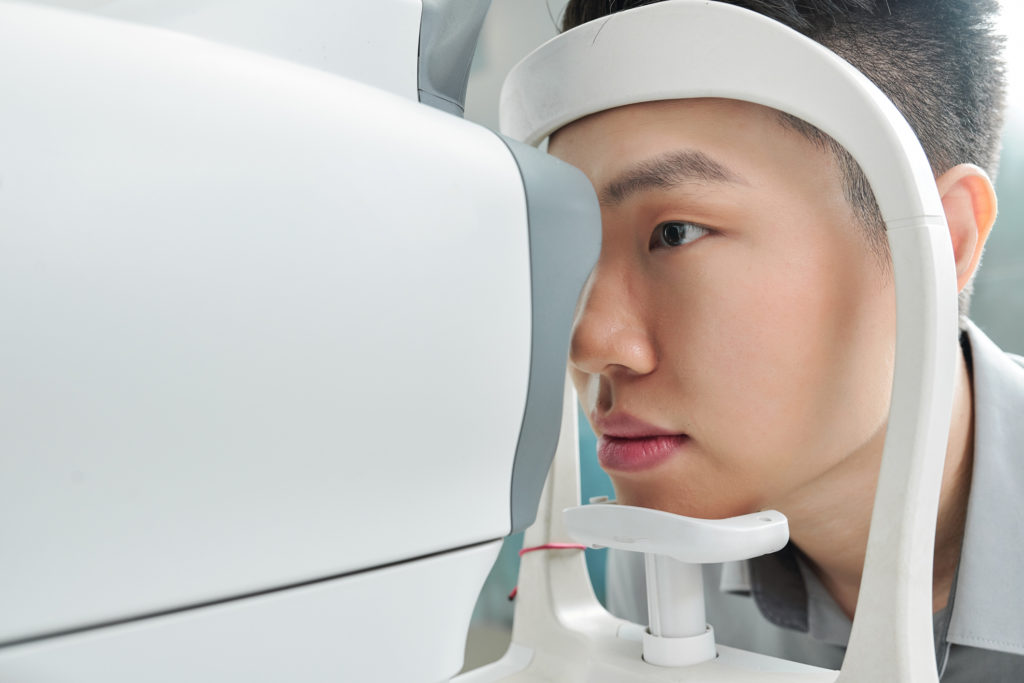By Adam Cmejla, CFP®

Feb. 19, 2020
This is the second of two articles by Adam Cmejla, CFP,® on evaluating practice fees to create a more profitable practice. This piece focuses on determining ideal fees for pretesting services. The first focused on how to determine ideal frame pricing.
In part one of this two-part series, I shared strategies you can implement in your optical to increase top-line revenue. In part two, I’d like to discuss how you can take the same strategy and apply it to your pretesting experience and strategy.
First, let me address the elephant in the room: insurance. I understand that having a third-party “play in your sandbox” can sometimes make it difficult to think about changing strategies in your practice. It can feel as if you’re landlocked in your decision-making abilities. Keeping with the status quo sometimes feels like the only option.
You can certainly continue to think this way, but know that there are other practices out there that are being innovative in how they both package and present pretesting options for their patients.
You want to deliver the best patient experience possible while also treating them in the best way clinically and have it also make a profit for the practice (and thus you the practice owner).
As a case study, let’s examine the idea of how to present retinal digital imaging to your comprehensive exam patients.
Traditionally, we collectively understand that additional pretesting services performed “without merit” (i.e. without a presenting medical issue justifying the test) is going to be a cash-pay for the patient. You also understand the benefits of this technology—both to you as the clinician as well as to the patient.
In terms of protecting patient’s eye health and protecting the practice legally, there is no substitution for dilation. However, there is a great advantage to coupling the dilation with screening via advanced technology like digital retinal imaging. Doing so helps to further safeguard the patient’s eye health and sends a message that your practice offers the latest advancements in care.
Use Pretesting to Show You are On the Cutting Edge
When was the last time you’ve used a VCR? Can’t remember? Me either. However, I can remember a day when the VCR was the latest and greatest piece of technology that changed the way we consumed movies in our homes. Then DVDs hit the market, making VCRs obsolete. Now, the same thing is happening to DVD players, with on-demand streaming and downloading of content to our devices more common.
Other Articles to Explore
My point is that as technology advances and changes, so too must the way you use equipment and technology in your practice and how you communicate these changes to patients.
Most of us “like what we know and know what we like.” One thing that we don’t like is change, so implementing any type of change in your practice is going to come with a few push-backs and questions. This is completely normal and the more you can be prepared and ready with your responses to your top anticipated questions and rejections, the easier it’s going to be for everyone in your practice. (To this point, I strongly suggest you meet with your team and script-out the most likely push-backs, and work as a team to determine how you will collectively and confidently address these patient concerns).
Decide: High Probability of Conversion for Lower Testing Fee or Lower Probability of Conversion for Higher Testing Fee?
If you are considering adding advanced new technology to your practice, you must first figure out which approach you are going to take: high probability of conversion for a lower testing amount, or a lower probability of conversion for a higher testing amount.
Let’s say that the insurance-equivalent reimbursement rate of imaging is $39. As a practice, you could decide to charge your patients $35, work on how you’ll communicate its value effectively to your patients, and see what your conversion rate is at that price point.
You could also take the approach of almost halving that price and knocking it down to somewhere around the $20-$25 range. After all, 50 percent conversion on 100 percent of the price is the same as 100 percent conversion on 50 percent of the price. The math doesn’t exactly work out, to halving the price, but it’s close and it illustrates the point.
Factor in Practice Demographics
If you are running a higher volume/lower net practice, you’ll likely want to consider the latter aforementioned strategy; a higher net/lower volume practice, the former.
Another added benefit of choosing the lower price point is that it will most likely lead to fewer uncomfortable conversations with your patients since the pricing isn’t as much of a shock, nor does it represent a higher percentage relative to your comprehensive exam fee.
It’s Worth Taking the Time to Educate Patients on Value of Added-Cost Pretesting
For practices that haven’t implemented a consistent positioning process to their patients on why this optional-but-beneficial testing is important to their eye health, let’s do the math on what it would mean to your practice to be intentional about positioning this more consistently.
Let’s take a practice that’s doing 18 comprehensive exams per day, assume that you’re going to take the “low price/high conversion strategy,” and estimate that you’re going to get a 75 percent conversion rate at $20 per exam.
(18 exams x 5 days) x $20 = $1,800
$1,800 x 75% = $1,350/week
$1,350/week x 50 weeks = $67,500 gross revenue
If you’ve already implemented this strategy with a solid conversion rate (85-90 percent) and it’s been awhile since you’ve increased your fees, consider a slight fee increase. Even in the low interest rate market that we still find ourselves sitting, inflation is still present (2019 consumer price index reflected a 2.1 percent inflationary increase). Your costs of doing business are going up; so too should your prices to reflect this increase.
If you were charging $20, consider increasing your fee to $22 or until you start experiencing push-back from patients. This comes back to testing the elasticity of demand, as discussed in Part 1.
If your patient base can support an even higher cost per image, then all the more power to you! Do the math as illustrated above at $30/image and you’ve increased your gross profit just over $100,000 annually!
Added Profitability & Enhanced Practice Brand
Each point of interaction with your patient gives you the ability to give them a WOW! experience in your practice and it also gives you an opportunity to demonstrate value and benefit to them.
There’s no reason that there can’t be an economic exchange for that value being delivered. Cost becomes apparent to the patient in the absence of value. Communicate the value and how it’s benefiting them and you’ll have happy and satisfied patients with a healthy bottom line.
>>This article is based on a recent podcast episode of Adam Cmejla’s show, “20/20 Money.” For the full interview and discussion, visit www.integratedpwm.com/54<<
 Adam Cmejla, CFP® is a CERTIFIED FINANCIAL PLANNERTM Practitioner and Founder of Integrated Planning & Wealth Management, LLC, an independent financial planning & investment management firm focused on working with optometrists to help them reach their full potential and achieve clarity and confidence in all aspects of life. For a number of free resources, visit https://integratedpwm.com/ebooks/ and check out the “20/20 Money Podcast” on Apple Podcasts or your favorite podcast platform to get more tips on making educated and informed financial and business decisions.
Adam Cmejla, CFP® is a CERTIFIED FINANCIAL PLANNERTM Practitioner and Founder of Integrated Planning & Wealth Management, LLC, an independent financial planning & investment management firm focused on working with optometrists to help them reach their full potential and achieve clarity and confidence in all aspects of life. For a number of free resources, visit https://integratedpwm.com/ebooks/ and check out the “20/20 Money Podcast” on Apple Podcasts or your favorite podcast platform to get more tips on making educated and informed financial and business decisions.

























